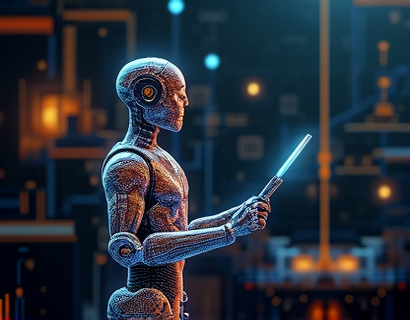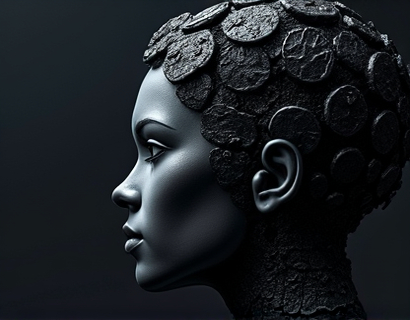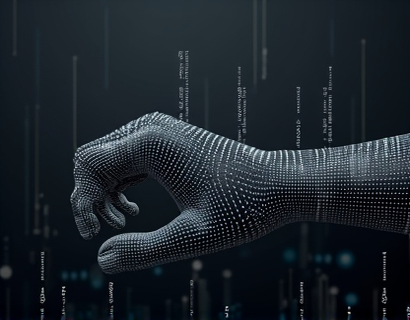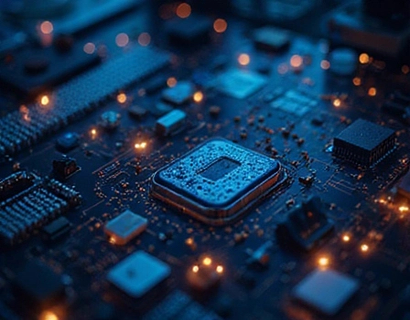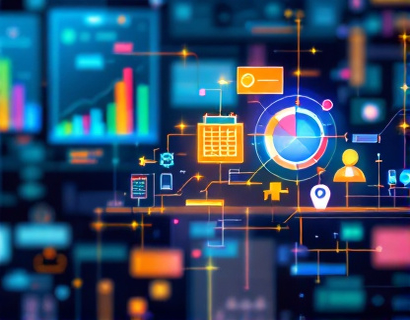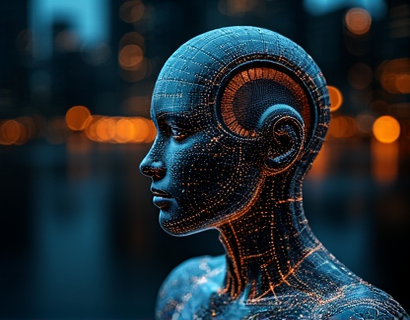Transforming Digital Experiences: The Synergy of Crypto and AI
The intersection of cryptocurrency and artificial intelligence (AI) is revolutionizing the digital landscape, offering unprecedented opportunities for tech innovators and early adopters. This convergence is not just about merging two cutting-edge technologies; it's about creating a new paradigm for digital engagement, security, and efficiency. As we delve into this topic, we will explore how the integration of crypto and AI is reshaping online experiences, providing advanced solutions that enhance online presence and streamline access to the latest applications.
Understanding the Basics: Crypto and AI
To fully appreciate the transformative potential of crypto and AI, it's essential to understand the fundamentals of each technology. Cryptocurrency, often referred to as digital or virtual currency, uses cryptography for security and operates on a decentralized network, typically a blockchain. This decentralized nature ensures transparency, security, and reduces the need for intermediaries.
Artificial intelligence, on the other hand, involves the simulation of human intelligence processes by machines, particularly computer systems. These processes include learning (the acquisition of information and rules for using it), reasoning (using rules to reach approximate or definite conclusions), and self-correction. AI can operate autonomously or be integrated into existing systems to enhance their functionality.
The combination of these two technologies creates a powerful synergy. Crypto provides a secure and transparent platform for transactions and data storage, while AI brings intelligence and automation to optimize these processes. Together, they can create more secure, efficient, and user-friendly digital experiences.
Enhancing Security with Crypto and AI
One of the most significant benefits of integrating crypto and AI is the enhancement of security measures. Traditional online platforms often struggle with security breaches, data leaks, and fraudulent activities. The decentralized nature of blockchain, combined with AI-driven security protocols, can significantly mitigate these risks.
AI can monitor network activities in real-time, detecting anomalies and potential threats with high accuracy. Machine learning algorithms can adapt to new patterns of attacks, making the system more resilient over time. Smart contracts, which are self-executing contracts with the terms directly written into code, can automate and enforce security protocols, ensuring that transactions are only completed when predefined conditions are met.
For tech innovators, this means developing applications with a higher level of security, which is crucial in an era where data breaches are increasingly common. Early adopters can leverage these advanced security features to build trust with their users and maintain a competitive edge.
Personalization and User Experience
The integration of AI in crypto-driven platforms allows for unprecedented levels of personalization. AI algorithms can analyze user behavior, preferences, and patterns to provide tailored experiences. In the context of crypto, this can mean customized portfolio management, personalized investment recommendations, and intuitive user interfaces.
For instance, an AI-powered crypto trading platform can analyze market trends, user history, and real-time data to suggest optimal trading strategies. This not only enhances the user experience but also increases the likelihood of successful trades. For tech innovators, this means creating applications that not only function efficiently but also provide a superior user experience, which is a key differentiator in a crowded market.
Streamlining Access to Crypto Applications
One of the barriers to widespread crypto adoption is the complexity and steep learning curve associated with blockchain technology. AI can play a crucial role in simplifying access to crypto applications, making them more user-friendly and accessible to a broader audience.
AI-driven chatbots and virtual assistants can guide users through the process of setting up and using crypto applications, providing step-by-step instructions and real-time support. Natural language processing (NLP) can enable users to interact with these applications using natural language, reducing the need for technical knowledge.
For early adopters, this means overcoming the initial hurdles of adopting new technology more easily. Tech innovators can focus on developing intuitive and accessible applications, knowing that AI will handle the complex backend processes, thereby broadening the user base and accelerating adoption.
Decentralized Finance (DeFi) and AI
Decentralized Finance (DeFi) is a rapidly growing sector within the crypto ecosystem, offering traditional financial services on blockchain platforms. AI can significantly enhance DeFi applications by optimizing processes, reducing risks, and improving user outcomes.
For example, AI can be used to predict market trends and automate trading strategies within DeFi protocols, maximizing returns and minimizing losses. Risk management tools powered by AI can assess and mitigate potential risks in real-time, ensuring that users' assets are protected. Smart contracts can be designed to execute complex financial operations based on AI-generated insights, increasing efficiency and reducing human error.
Tech innovators working in the DeFi space can leverage these advanced solutions to create more robust and user-friendly platforms. Early adopters can benefit from these innovations, gaining access to sophisticated financial tools and services that were previously out of reach.
Supply Chain and Logistics Optimization
Beyond finance, the combination of crypto and AI is transforming supply chain and logistics. Blockchain provides a transparent and immutable record of transactions, while AI can optimize various aspects of the supply chain, from inventory management to route planning.
AI algorithms can analyze vast amounts of data to predict demand, optimize inventory levels, and reduce waste. Blockchain ensures that all transactions are recorded accurately and transparently, enhancing trust among stakeholders. Smart contracts can automate payment processes and ensure compliance with contractual obligations, reducing the need for intermediaries and lowering costs.
For tech innovators in the supply chain industry, this means developing applications that are more efficient, transparent, and secure. Early adopters can gain a competitive advantage by implementing these advanced solutions, improving their operational efficiency and customer satisfaction.
Content Creation and Distribution
The creative industry is also witnessing a transformation through the integration of crypto and AI. Content creators can use blockchain to monetize their work directly, without intermediaries, ensuring fair compensation. AI can assist in content creation, from generating ideas to producing high-quality content, such as music, art, and written material.
AI-powered tools can analyze audience preferences and generate content that resonates with specific demographics. Blockchain-based platforms can ensure that creators receive fair royalties for their work, fostering a more equitable ecosystem. For content creators, this means more control over their work and a more sustainable income stream.
Tech innovators in the creative sector can develop platforms that leverage these technologies, providing creators with advanced tools and fair compensation mechanisms. Early adopters can capitalize on these innovations, creating unique and engaging content that reaches a wider audience.
Conclusion
The convergence of cryptocurrency and artificial intelligence is opening new frontiers in digital innovation. By enhancing security, personalizing user experiences, streamlining access to applications, optimizing DeFi processes, transforming supply chains, and revolutionizing content creation, this synergy is reshaping the digital landscape. For tech innovators and early adopters, embracing these advanced solutions can lead to significant advantages, from improved security and efficiency to new business opportunities and enhanced user engagement.
As the technology continues to evolve, the potential for further innovation is immense. The future of digital experiences is being redefined, and those who embrace the power of crypto and AI will be at the forefront of this exciting journey.










